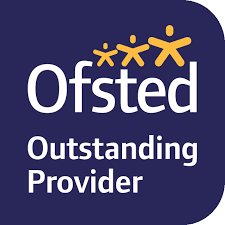E-SAFETY
E-Safety is about being safe whilst using electronic device including, computers, iPads, PlayStations. As more devices become available for our children to use, the greater amount of time they spend on them. This develops our children's knowledge of technology and can be educational but we need to ensure our children are safe when online.
Find advice on simple things you can do to make sure they are using the internet safely. Please click the link to Stockport's online safety hub:
As part of this hub you can access a free account to Qustodio, a comprehensive parental control and digital wellbeing app designed to help parents manage and supervise their child’s online activities. With over 6 million parents and 24,000 schools worldwide using Qustodio, it stands out as one of the most trusted and best-rated apps on Google Play and the Apple App Store.
At Reddish Vale Nursery School, we teach our children the following steps of what to do if they see something on a device that makes them unhappy or worried:
Current E-Safety Concerns
Fore more advice regarding Safety features on Netflix and to view a family guide for safer internet use, please click the images below.
What can I do to support my under 5?
There are lots of things you can do to support your under 5. This is not a complete list, but a range of strategies you can use to improve your child’s online experience:
1. Explore together: Explore your child’s favourite apps and websites with them. This can be a fantastic way to find out what your child enjoys doing online, as well as having fun and learning together.
2. Talk to your child about their online experiences: Start and continue regular conversations with your under 5 about what they enjoy doing online, introducing online safety messages. These conversations can be a great way to reinforce the message that if your child sees anything online which makes them feel worried, they can tell you or another adult they trust.
3. Supervise your under 5 while they’re online: Keep the devices your child uses in communal areas of the house such as in the living room or kitchen where an adult can supervise. Children under 5 should not access the internet unsupervised in private spaces, such as alone in their bedroom or bathroom.
4. Parental controls: Make use of the parental controls available on your home broadband and any internet enabled device in your home. You can find out more about how to use parental controls by visiting your broadband provider’s website, or by viewing advice/step-by-step guides available on the internet matters site.
5. SafeSearch: The use of ‘SafeSearch’ is recommended for use with young children. Most web search engines will have a ‘SafeSearch’ function, which allows you to limit the material your child can see when they’re online. Look out for the ‘Settings’ button on your web browser homepage, which is often shaped like a small cog. It is important to understand that no ‘SafeSearch’ function is 100% effective, and this cannot be used alone to protect your child from being exposed to age inappropriate material. Children's search engines are also useful including https://swiggle.org.uk/ and https://kidssearch.com/
6. Set boundaries: As a family you can agree a set of rules, such as locations in the house where devices can be used, times of day your child can use devices, or which age appropriate apps or websites they can access. On devices you do not wish your under 5 to access, use passwords and keep these out of reach of your child.
7. Lead by example: Modelling the digital habits you expect from your child (for example, no tablets during meal-times) can be an effective way of supporting young children to develop their own positive digital behaviours from an early age.

Internet Matters is a free online resource for every parent in the UK that will show you the best ways to protect your children online. You can find out more information on this website: https://www.internetmatters.org/advice/0-5/





